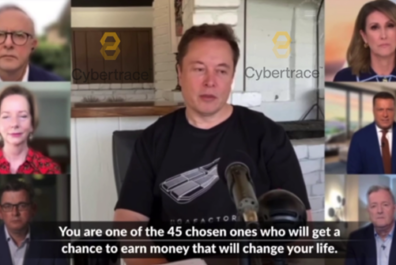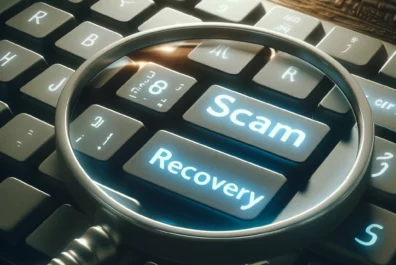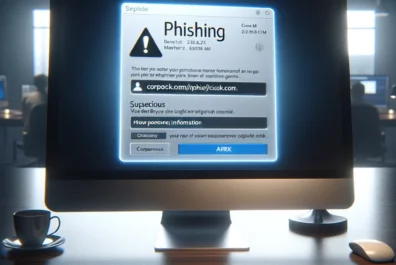Impersonating authorities
A secondary scam occurs when the victim of a scam is targeted again in a secondary or follow-up scam.
One of the most common types of secondary scams we see is when a victim of a scam is contacted by a scammer impersonating authorities, a government body, an insurance company, an investigator or a lawyer.
The second scammer may say something like, “we’ve been investigating this criminal group of scammers for some time now, and we have recently arrested over 15 people who were involved in the [initial] scam”.
Building trust
From here, the second scammer will likely continue to communicate with the victim for some time to build trust and credibility. Eventually, the second scammer may say something like, “we can refer you to an insurance company who will be able to recover all of your money.”
Now, you’ll likely be communicating with someone from the (fake) ‘insurance company’ and this person will say that they are able to get your money back, but they just require a small excess payment to be able to lodge the claim. They will probably ask for an amount between $1,000 – $5,000.
The ‘double rip’
But of course, you guessed it, there is no insurance claim! Your money (the insurance excess apparently required) will likely just be going into the pockets of the same scammers who ran the initial scam.
In a question and answer publication from the Barefoot Investor, Scott Pape refers to this type of scam as a ‘double rip’. In this publication, the victim asks about TradeMote, an offshore cryptocurrency broker. The victim was then contacted by someone who advised they could get his money back, for an investment of $10,000 – $20,000.
Targeting victims
Secondary scams are particularly brutal as the victim of the initial scam has likely just lost their life’s savings or their retirement fund. The scammers know the person is desperate to recoup some of their funds and, essentially, someone who was scammed once is a prequalified customer for the scammer!
Just recently, we’ve encountered a number of secondary scams. One was very convincing and impersonated the Director of the Philippines’ Anti-Cybercrime Group. The scammers communicated with our client via email and the email address used was near exact to that of the legitimate Director. We cannot stress enough that even when everything looks and sounds real, it may be yet another scam.
How to avoid a secondary scam
If you have been the victim of a scam, avoid becoming the victim of a secondary scam by independently validating all the credentials available for the company or individual contacting you. Do your own research and don’t rely on information provided to you. We also recommend following these steps for all online or over-the-phone service providers, especially where the contact was unsolicited.
We strongly recommend you ask the service provider for a quote and independently check all the information provided on the quote. If the service provider will not issue you a formal written quote, now is the time to stop all communication with them.
Checking business names and numbers
As an example of checking quote information, let’s take a look at our company: Cybertrace. You can independently verify this information via the Australian Business Registry (ABR) ABN Lookup tool, which is a government source and uses the gov.au domain extension.
For Australian service providers, compare the company name and Australian Business Number (ABN) with the information listed in the ABR record. If the company is from outside Australia, this is a potential red flag, so more independent checks are needed. If the company is from one of the known money laundering jurisdictions below, stop all communications as this is almost certainly a scam:
Andorra, The Bahamas, Belize, Bermuda, The British Virgin Islands, The Cayman Islands, The Channel Islands, The Cook Islands, The Island of Jersey, Hong Kong, The Isle of Man, Mauritius, Lichtenstein, Monaco, Panama, St. Kitts, and Nevis.
For more information on money laundering jurisdictions and tax havens, click here to read Investopedia’s article published by Julia Kagan.
Our intelligence indicates that criminal syndicates from Israel, Cyprus, Malta, Estonia and Bulgaria are actively targeting Australians so be extra wary of companies and individuals from these countries.
Accreditation and licences
If you’ve been sent a quote, compare company information recorded on the quote with the information recorded on the company website; including any industry licence numbers. In our case, you could compare our company name and ABN against our NSW CAPI License record via the NSW Government website.
A copy of our NSW Police Force-issued Investigations Master Licence is available on our website at https://www.cybertrace.com.au/accreditation/. However, be wary of any information provided on company websites. The most reliable source is a reputable government website, but it’s crucial that you confirm the website is a genuine government site.
Bank details
Again, from reviewing the quote you will be able to locate the company’s bank details. Ensure the company bank account details exactly match the licensing and ABR records for the company as scammers often impersonate legitimate companies. If the bank account is for an overseas bank, this is a red flag as it is difficult to verify.
For Australian bank accounts, contact the bank listed on the quote and ask to verify the bank account details. A true business bank account has already been verified by the bank when it was first opened. Banks verify business accounts by cross-referencing company details and the company’s directors.
As indicated in a recent ABC news article, banks don’t always pay attention to the receiving customers’ names for bank transfers. This means scammers can fraudulently copy the company name of a legitimate company and add it to their own bank account details. This is why it’s very important to check that the bank account name and number are actually for the stated company.
Help! I’ve already been had
If you’ve been the victim of a scam, or if you’ve read this article too late and are already the victim of a secondary scam, contact us to discuss how we can help. Our investigators and analysts are experts in identifying scams. Speak with us about verifying a service provider to reduce the risk of being scammed.



Yesterday, we had a videocall with two representatives from Claim-justice.com in a private cryptocurrency scam. They said they follow the money, not the persons. From bank account to Coinbase has been our transfers. They accepted an upfront bit by bit payment. They recommended this zoom meeting so we could meet them face to face for their credibility, and they promised to send me a link from the video recordings today, including their mentioned promises. Though, have not got the links yet and I think we will never get.
Found your review of the company and we are in doubt now.
Please give us your comments.
Thanks!
Hi Tomas, thank you for your comment.
Please refer to our blog regarding Claim-justice.com
https://www.cybertrace.com.au/claim-justice-com-alert-beware-of-recovery-scam-operators/